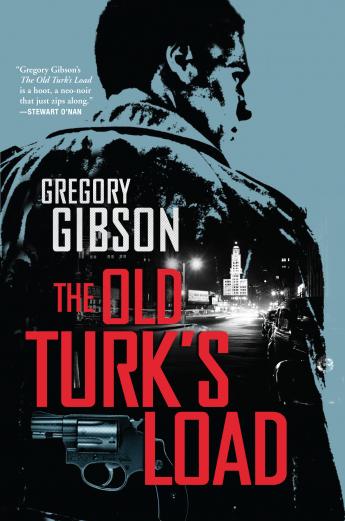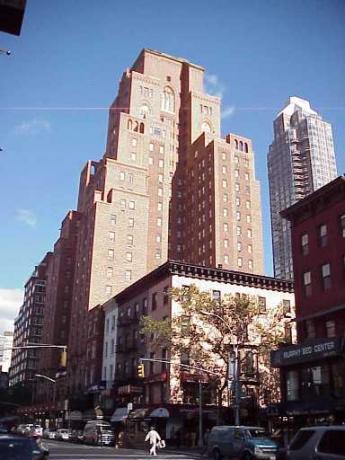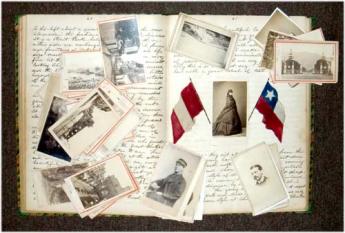2013 - Greg Gibson

Greg Gibson – rare book dealer, proprietor of Ten Pound Island Book Company, ABAA member, and a distinguished author – has just released his new noir crime novel “The Old Turk’s Load”. The story, which takes place in 1967 Manhattan, is highly praised by the New York Journal of Books:
“(The) character descriptions … shine like pistols in sentences that burst like bullets … The Old Turk’s Load is probably the fastest neo-noir read on crime novel shelves. Exquisitely hardboiled, this crime novel is the perfect beach read for those nurtured on Tarantino and Spillane.”
Greg Gibson will be exhibiting at the New York Antiquarian Book Fair this weekend and will be signing copies of his new novel, with all profits going to the ABAA’s Benevolent Fund. In his blog Bookman’s Log he writes about the fair, his novel and New York in the 1960s.

Imaginary Toads, Real Gardens
(Please take a moment to read Marianne Moore's wonderful poem from which this week's title is stolen.)
Impossible to go about packing up for the New York Book Fair without remembering fairs past - the leaky Armory of old, the cramped Americana Hotel, the fresh start with promoter Sandy “he made the trains run on time” Smith. All those early bookfair expeditions to the Big Apple for the Trinity, Greenwich Village, and Park Avenue events, staying with pals in Jersey City and Brooklyn, and Puffy’s or the Raccoon Lodge, or Walker’s in Tribeca. We were young then, and didn’t need to sleep. And later, staying like grownups in a real hotel - the lovely old Barbizon, with Anne Marie and nine-year-old Celia.
Or the year they had the Rodney King sympathy riots down in the Village, or the weekend it got so hot all the lilac bushes blossomed, exploded, and died. Then there was that one New York fair at which I actually made a lot of money. Yes, the memories crowd in.
My family lived on Long Island in the early Sixties, and Manhattan was just a commuter train ride away. Of course it was a different city then and, in memory, more appealing. Glitz has replaced what seemed to me interesting squalor; the crowds are impossibly dense now; there is no “cheap” anymore. Maybe the worst part is all those people hooked up to invisible devices talking out loud on the street. We used to have people talking on the street in the Sixties, but…
I used that “remembered” New York as one of the settings for my novel The Old Turk’s Load. And when memory failed, as it so often does, there was plenty of help. Two of the reference books I relied on for writing about Manhattan back when are New York 1960 (part of a wonderful decade-by-decade series on “architecture and urbanism between the Second World War and the Bicentennial,”) and Kenneth Jackson’s Encyclopedia of New York published by Yale and the NY Historical Society. You wouldn’t believe how much fun it is to browse through these 1300 page monsters.
After a while it becomes possible to inhabit a place in one’s imagination.
One of the characters in The Old Turk’s Load is a shady real estate developer who has his offices in the Tishman Building at 666 Fifth Avenue. (Yes, it really exists. They shot the roof scene in Exorcist II there.)
I chose the building because it has a big, red, satanic “666” at it’s very top, perfect site for a morally challenged character to roost.
According to New York 1960, the Tish was built in 1957, and was considered a marvel of modern design. The lobby was particularly Fifties surreal, so I put a glimpse of it in my book.
This week, while I’m in New York doing the book fair, I’ll steal some time to revisit the real places inhabited by my imaginary characters.
Here’s one that’s New York bound, with real characters and real places…


JOURNAL OF THE PACIFIC CRUISE OF THE USS LANCASTER. 1964-1865
b/w pen sketches in text, carte de visite and prints tipped in, colored chart. Folio. About 170 pages manuscript entries.
This is a journal written by lieutenant D. F. Webster aboard the USS Lancaster in 1864-65, when she was in the Pacific Squadron. The text features long descriptions of Central and South American ports, people, and surrounding country, recaps of revolutions, Lincoln’s assassination, earthquakes, slaving episodes, and a 25 page description of the Sandwich Islands in 1865 - this part alone occupying about 8500 words. Perhaps the most interesting single event is his account of the capture of the notorious “Salvador pirates,” The journal is illustrated with a few ink sketches of such things as cock pits and native craft; it also has a cdv of a woman of Lima in her characteristic costume, several wood engravings pasted in, a colored map of North and South America, showing the track of the Lancaster, and a full page calligraphic emblem or design in which the officers of the Lancaster are named. As a rather spectacular addition, the journal is accompanied by more than 50 cartes de visite, including 10 of Hawaii, and 21 of Panama and Lima with his notations in manuscript on the back, and a leather album partially filled, presumably with portraits of family members. Also cvds of the Lancaster and of the Mare Island Navy Yard where he lived in 1866, and 7 cdvs of naval officers. Entries are clear and legible. Bound in quarter reverse calf over marbled boards. $7500
(Published on Bookman’s Log, presented here by permission of the author.)
